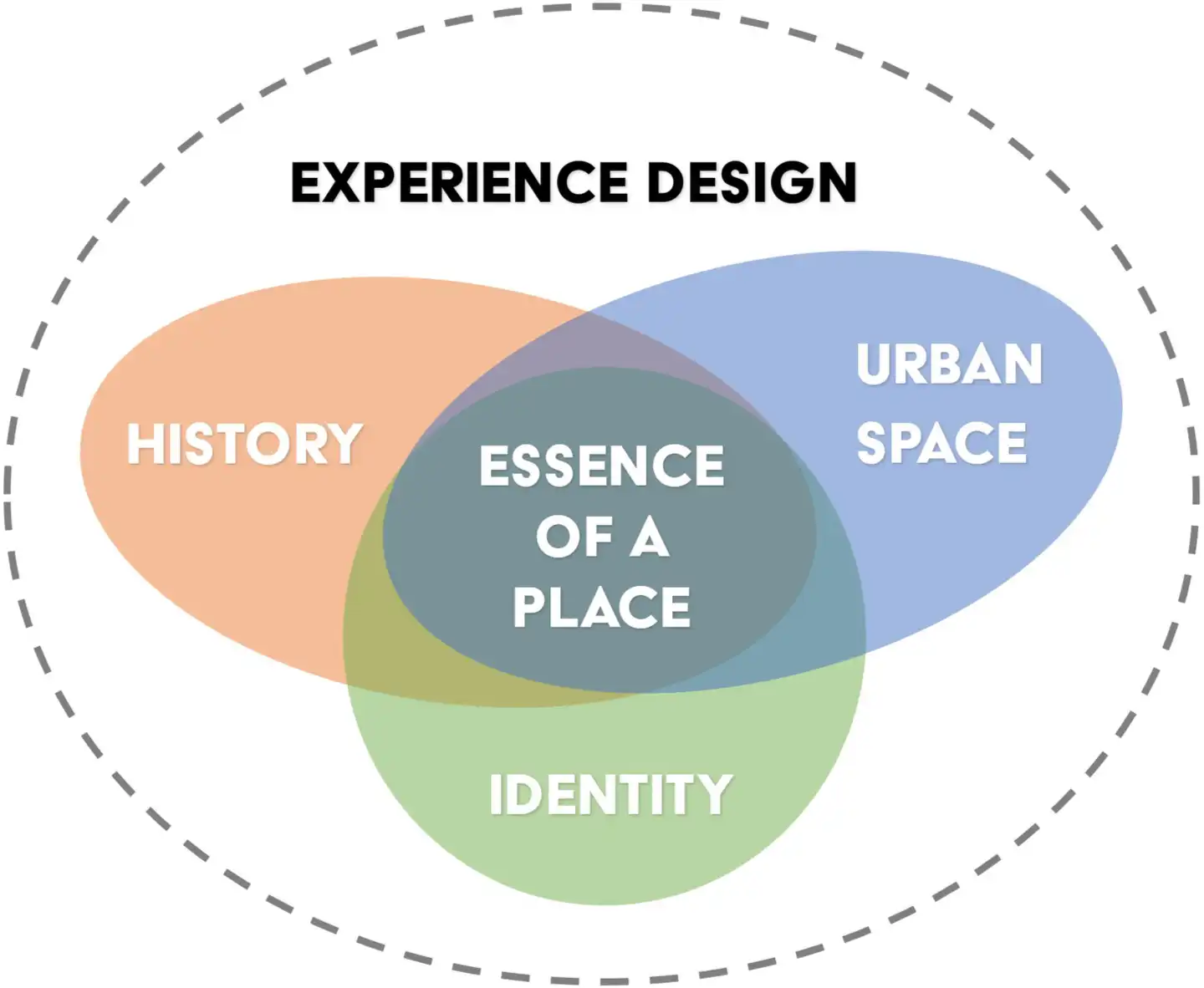Kongens Punkt
2018 | Experience Design

Fredericia with the King’s Point marked

Creating a psychogeographic map

Using the Elito method

Reframing through investigation of values

Connecting the old and the new with the King’s Point as the pivot
Background
Fredericia is a city with a unique history and urban space with a red thread stretching all the way back from its founding almost 400 years ago and continuing with the establishment of a new district, replacing the industrial port area, inspired by the vision and plans that King Frederik IV made in 1677 for Fredericia to become Denmark’s capital and the Venice of the North.
The most significant unique urban feature of Fredericia is the large fortification in the shape of a quarter circle encompassing the entire inner city. These fortifications were a determining factor for the outcome of the battle at Fredericia on 6th July 1849, one of the most momentous events in Danish history.
Challenge
With the goal to ensure the new district becomes a vibrant and central area with a variety of tourism activities, and generally benefit tourism in the Fredericia and Lillebælt region, the challenge was to create a cohesive identity through experience design to integrate the existing historic city centre with the new district of Fredericia, both historically and in terms of urban space.
Investigation
Our approach was inspired by the design thinking perspective of Empathy, to better understand the users’ needs in terms of meaning and significance, build background knowledge, and gather data to steer the direction of the project. For these purposes we chose a phenomenological approach with psychogeographic mapping, qualitative interviews of stakeholders, and a guided tour of Frederica as methods.
The body is the prerequisite for being and acting in the world and having a body means that we are inter-involved and inseparable from the world, so all experience begins with the body. Our experience of the world is inseparable from our presence in the world and our existence through a body, affects the way we perceive and experience the world.
Both meaning and value are created through the action of experiencing phenomena, including the experience of urban space.
Evaluation and ideation
Due to the large number of observations, we chose to use the Elito method with an Affinity Mapping approach by using a large wall surface to gain a comprehensive overview while simultaneously being able to delve into the details.
Using a visual and physical tool in all phases of the evaluation and ideation process, made it possible, at all times, to form connections between any and all elements, resulting in a constant flow of ideas throughout the process.
Values
To form the basis of our assessments from the evaluation and ideation process, we identified eight different values, and simultaneously gained a clear understanding that three values held greater relevance and significance than any other: Identity, History, and Urban Space; albeit only one of the three values had been directly expressed: History.
We revisited the values multiple times in the following stages to evaluate how well they were reflected in our ideas, concepts, and key concepts.
Conclusion
The three main values for Fredericia as a city were clear to us: Identity, History, and Urban Space. By examination of what in Fredericia was significant for all three values and could be viewed from an experience design perspective, we arrived at Kongens Punkt (The King’s Point) as the most significant central element through which everything else in Fredericia could be perceived.
Kongens Punkt is central in a historical context, as the history stemming from this point leads both back in the past and forward into the future. Fredericia’s foundation and layout in 1650, including the fortifications that played a crucial role in Denmark’s history 200 years later, all derived from this point.
Kongens Punkt is located right on the border between the old town and the new one being established, thus becoming both a point of intersection, a dividing line between the old and the new, and at the same time, a gathering point between the old and the new, depending on the identity created around it. Consequently, it has secured yet another central role in the city’s future history.
Kongens Punkt is the most overarching element in the urban space, although not the most striking, as the rest of the city’s design stems from it. Without Kongens Punkt, the fortifications, which are perhaps the most conspicuous element in the urban space, would not have the form they do.
Kongens Punkt is also closely tied to identity, because identity and history are closely linked, and because the city’s identity with its unique urban space has originated from Kongens Punkt.
The King’s Point
Our proposal for a concept was a location-based digital historical interactive city map with city walking and storytelling functionality. An interactive map where you can explore both the city’s past history as well as its future history. On the map, you can select a specific year or time period and thereby see how Fredericia looked in the past or will look in the future.
The central starting point of the city map is Kongens Punkt, and it will feature a variety of locations that you can visit to have a story told or shown as a video.
This concept could be used to enhance the city’s identity through the experience and communication of values based on its culture, history, and urban space, and could be utilized by various target audiences.